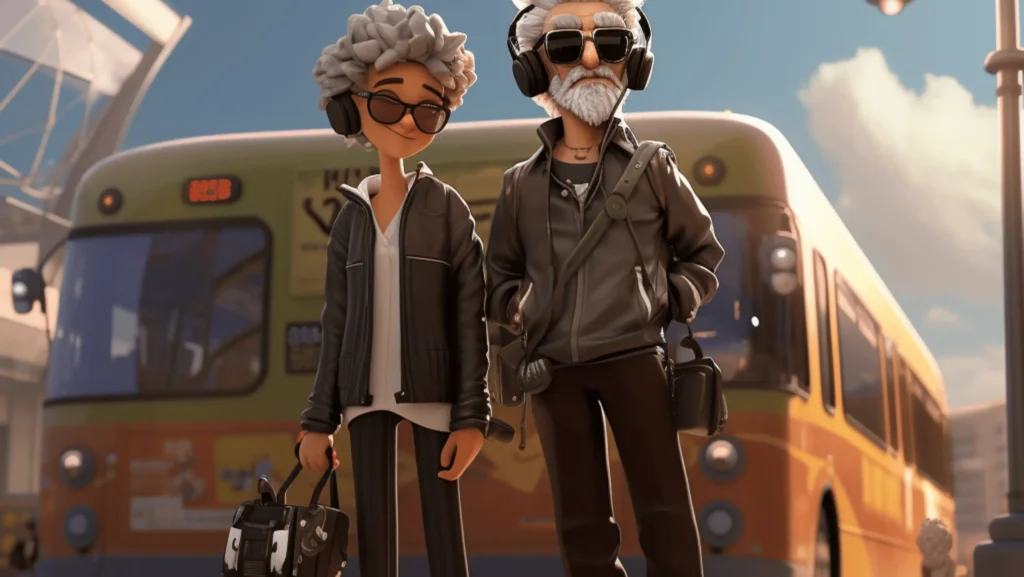When traveling, one of the easiest ways to keep your expenses in check is by using public transportation. Whether you’re exploring a new city or traveling across a country, public transit is a cost-effective and often efficient alternative to taxis, rental cars, or ride-sharing services. In this article, we’ll explore the benefits of using public transportation while traveling and provide tips on how to make the most of it to save money.
1. Affordable and Budget-Friendly
Public transportation is generally far less expensive than other modes of travel. A taxi or ride-sharing service can easily cost you $20 or more for a short trip, while a subway, bus, or tram ride might only cost a couple of dollars. This can add up significantly, especially in larger cities where distances between key tourist destinations may be quite long. In fact, many cities around the world have well-developed and affordable transit systems, making it easy to get around without breaking the bank.
Most major cities offer discounted fares for tourists, with some even providing all-day or multi-day passes for unlimited rides. For example, in cities like London, Paris, or New York, tourists can purchase day passes that offer unlimited access to buses and trains for 24 to 72 hours, which is often much cheaper than paying for individual rides. Additionally, many cities offer discounted fares for children, seniors, or students, making it even more affordable for families and young travelers.
2. Access to More Areas and Local Culture
One of the hidden gems of using public transportation is that it allows you to experience a destination more like a local. While taxis and rental cars may take you from one point to another, public transport often provides the opportunity to see the city in a way that private transport cannot. Traveling on a bus or metro gives you a sense of the daily life of locals, and it can lead you to neighborhoods or hidden spots you may not have discovered otherwise.
Moreover, public transit often connects you to a wider array of places, from popular tourist attractions to local markets, parks, and dining districts. In some cities, public transportation systems are designed to link key cultural and historic sites, so using the subway or tram could be the most direct and scenic way to get to your next stop.
3. Eco-Friendly Option
In addition to saving money, using public transportation is also an environmentally friendly option. Public buses, subways, and trains help reduce the number of cars on the road, which lowers traffic congestion and reduces emissions. If sustainability is important to you, public transportation can be an easy way to contribute to the preservation of the environment while still enjoying your travels.
Many travelers today are becoming increasingly conscious of their carbon footprint, and choosing public transport over taxis or rental cars is a simple, effective way to reduce the environmental impact of your trip. This also ties into the growing trend of “green tourism,” which emphasizes eco-conscious travel choices.
4. Time-Saving and Efficient
Public transportation is often more efficient than relying on taxis or cars, particularly in busy cities with heavy traffic. While taxis may be convenient, they are also prone to delays caused by gridlock or detours. On the other hand, subways, buses, and trams typically have dedicated lanes or routes, allowing them to avoid much of the congestion on the roads, making them faster during peak hours. This can help you save both time and money.
In cities with extensive transit networks, trains and buses run frequently, so you don’t have to wait long to catch your next ride. Unlike taxis, where you may have to wait for a driver to become available, public transit is often more predictable, which can make it easier to plan your day and navigate a city with confidence.
5. Navigating Public Transportation Systems
To get the most out of your public transportation experience while traveling, preparation is key. Here are some tips to help you navigate unfamiliar transit systems with ease:
- Research Routes and Timetables: Before arriving at your destination, familiarize yourself with the local public transport system. Most cities have websites or apps that provide maps, timetables, and route information, allowing you to plan your journey ahead of time.
- Download Transit Apps: Many cities now offer transit apps that provide real-time information about routes, schedules, and fare prices. These apps can be incredibly helpful for figuring out how to get from one point to another quickly and efficiently.
- Consider Travel Cards or Passes: In many cities, you can purchase prepaid travel cards or passes that allow you to use public transportation at a discounted rate. These cards can be topped up as needed and can save you time and money, especially for longer stays.
- Be Aware of Safety: While public transportation is generally safe, it’s important to stay vigilant, especially in crowded areas. Keep your belongings secure and be mindful of your surroundings.
6. Explore Lesser-Known Attractions
One of the benefits of public transportation is that it can lead you off the beaten path. Many tourists stick to the most popular areas, but by using local transit, you can venture into lesser-known neighborhoods and discover hidden gems. Whether it’s a quiet park, a local food market, or a lesser-known museum, public transit can help you explore more of a city’s culture and charm without spending a lot of money.
Conclusion
Using public transportation while traveling is one of the smartest and most practical ways to save money. It’s not only affordable but also offers a unique chance to experience a destination from the perspective of a local. By taking advantage of discounted travel passes, planning your routes in advance, and embracing public transit as part of your travel experience, you can make the most of your trip without overspending. The next time you’re in a new city, skip the taxi line and hop on a bus or subway—you’ll save money, enjoy the sights, and become part of the local rhythm of life.




